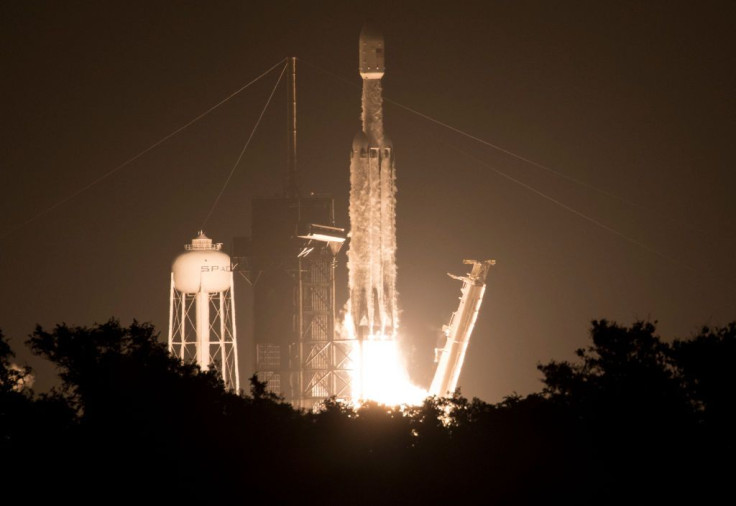SpaceX Falcon Heavy Fairing’s Return To Earth In Amazing Video [WATCH]

SpaceX has released the stunning video of the Falcon Heavy’s fairing as it returned to Earth shortly after the rocket’s launch. The fairing, which was part of the spacecraft’s nose cone, could be the same component caught by SpaceX using a giant net.
The Falcon Heavy rocket officially launched for its STP-2 mission on June 25. In partnership with the U.S. Air Force, the aim of the mission was to deploy over 20 military satellites in space. Aside from these, the other payloads for the mission included the Deep Space Atomic Clock and the Sun-powered LightSail 2 spacecraft.
Shortly after Falcon Heavy’s takeoff, the rocket’s nose cone, which protects the onboard payloads or satellites, detached from the craft and separated into two fairings. In order to ensure that the fairings have a safe re-entry, they were equipped with parachutes and small onboard thruster systems.
In the video posted by SpaceX on Twitter, one of the fairings can be seen as it detaches itself from the spacecraft. For a couple of seconds, the Falcon Heavy can even be seen in the background as it thrusts its way to space.
View from the fairing during the STP-2 mission; when the fairing returns to Earth, friction heats up particles in the atmosphere, which appear bright blue in the video pic.twitter.com/P8dgaIfUbl
— SpaceX (@SpaceX) July 3, 2019
As the fairing returns to Earth and enters the atmosphere, blue-colored flames begin to appear. According to SpaceX, this was caused by the particles in the atmosphere after getting heated up by friction due to the fairing’s re-entry. Eventually, the entire rocket component burns up, resulting in an amazing cosmic light show.
Since the nose cone divided into two, it is not yet clear if the fairing was the same one that SpaceX caught recently. For years, the company has been hoping to catch components of its rockets as they return to Earth so they can be re-used in future missions.
SpaceX had a hard time accomplishing this because the rocket components usually fall into the ocean, damaging their onboard systems. But after years of planning, the company was finally able to achieve its goal by successfully catching one of Falcon Heavy’s nose cone fairings as it fell back to Earth. SpaceX was able to accomplish the amazing feat by equipping a boat with a huge net.
© Copyright IBTimes 2024. All rights reserved.





















